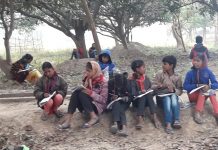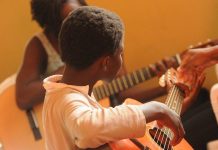Learning is a lifelong. One process must not only strive to learn but to learn how to learn better and achieve optimal results. Psychologists are all too familiar with the concept of learning.
They acknowledge that each learner has unique learning styles and mannerisms. In order for the learning curve to progress, the individual must use scientifically-tested learning strategies, which have proven, time after time, to enhance this profound process of learning and acquiring knowledge. Psychologists believe with certitude that any learning refers to the relatively permanent change in behavior potentiality, brought about by experience.
Learning is something intimate and personal. Indeed, there exist individual differences in learning. “Social engineering” is a relevant concept in this context. Learners or pupils need to be conditioned and socially engineered during the process of gaining expertise in a field of knowledge. Many a time, social interaction, peer group facilitation and team dynamics encompass a vital aspect of the learning process.
In the late 19th century, as psychology began to flourish, a heavy onus was placed upon the accumulation of quantitative “hard” data about human behavior. The “classical” view of human intelligence focused merely on psychometric testing. A revolutionary step was taken by psychologist Howard Gardner who propounded the existence of eight different types of intelligences.
These intelligences are linguistic intelligence, logico-mathematical intelligence, spatial intelligence, musical intelligence, bodily kinesthetic intelligence, interpersonal intelligence, intrapersonal intelligence and naturalistic intelligence. Gardner at a later stage added one more type of intelligence termed existential intelligence. An individual may possess one or more of these intelligences to a major extent.
Linguistic intelligence describes the ability to perceive or generate spoken or written language. It is exemplified by poets, writers and journalists. Logical/mathematical intelligence involves the using and appreciating numerical, causal, abstract or logical relations. It is exemplified by mathematicians, statisticians, engineers and scientists. Spatial intelligence refers to the ability to perceive visual or spatial information (large-scale or more local), to transform and modify this information, and to recreate visual images even without reference to an original physical stimulus. Spatial intelligence is employed in visual art, drafting, navigation and cartography, amongst other things. Musical intelligence refers to the ability to create, communicate and understand meaning made out of sound. It can be seen in musicians and music critics but also outside the musical sphere (for example, auto mechanics and cardiologists make diagnoses based on careful listening to patterns of sound). Bodily kinesthetic intelligence involves controlling all or part of one’s body to solve problems or fashion products. It can be seen, for instance, in athletics, dance and hiking. Interpersonal intelligence involves the capacity to recognize and make distinctions among the feelings, beliefs and intentions of other people. This type of intelligence enables people like Martin Luther King and Mao Zedong to communicate with others and perform effectively. Intrapersonal intelligence refers to the ability to form a mental model of oneself and to draw on the model to make decisions about the viable courses of action. Among the core operations are the capacity to distinguish one’s feelings and to anticipate reactions to future courses of action. Naturalistic intelligence involves the ability to understand and work effectively in the natural world. It is exemplified in biologists, zoologists, naturalists, geologists, etc. Existential intelligence refers to the ability to be sensitive to, or have the capacity for conceptualizing or tackling deeper or larger questions about human existence, like the meaning of life, why we are born, why we die, what consciousness is, etc. People high on existential intelligence can be called cosmic smart, wondering smart, spiritually smart or metaphysically intelligent. Gardner offers the following definition: Individuals who exhibit the proclivity to pose and ponder questions about life, death, and ultimate realities.
[irp]
With the discovery of various types of intelligences, the focus shifted from attaching importance to I.Q testing to a multidimensional perspective on human potential.
Taking into consideration the different types of intelligences, the learner may be asked to choose to pursue what he/she is best at. The pupil’s learning style then needs to be assessed. There are seven different types of learning styles, which are intimately linked to the nine different types of intelligences. The learning styles include visual(spatial) learning style, aural(auditory-musical) learning style, verbal (linguistic) learning style, physical (kinesthetic) learning style, logical (mathematical) learning style, social (interpersonal) learning style and solitary (intrapersonal) learning style.
The learner with visual learning style prefers to learn using pictures, images and spatial comprehension. In the aural learning style, the pupil prefers using sound and music whereas in the verbal learning style, he/she prefers using words, both in speech and writing. In the physical learning style, the learner likes to use his/her body, hands and tactile sensation. In the logical learning style, the individual enjoys using logic, reasoning and systems. The individual who prefers the social learning style desires to learn in groups or with others whereas individuals inclined towards solitary learning style like to work alone, unperturbed, using self-study and reflection. It is to be noted that a learner may be comfortable using one or a combination of learning styles.
Depending on cultural differences, a learner in one culture may prefer to learn in an entirely different manner when compared to one in another culture. If the learner in an Asian country adopts and adapts to the way of learning followed in a European context, or adopts an amalgamation of modes of learning from different continents or countries, it will not only widen his/her perspective but will provide him/her hands-on experience and a global frame of mind. Such pluralism and diversity creates an opportunity with potentially positive outcomes.
Diversity in the learner’s process of accumulating knowledge can result in increased achievement and productivity, creative problem solving, growth in cognitive and moral reasoning, increased perspective-taking ability, improved relationships and general sophistication in social interaction.
Learners may choose to employ a variety of methods of learning such as using charts, maps, diagrams, mind maps, narrating the material learned to a peer, teaching other kids, reflecting on the syllabus covered, role plays, taking notes from various sources of media, watching videos, listening to audio recordings, reading magazines, newspapers, reading relevant books of different genres like non-fiction, fiction, reference books and so on.
One must keep in mind to recognize diversity and its value, build an inclusive, unifying identity, understand cognitive barriers, understand the dynamics of intergroup conflict, understand social engineering, create a cooperative space for learning, teach conflict resolution procedures and teach civic values.
Thus, one must embrace individual differences in learning, while valuing diversity, multicultural education and human relations.
Samhita K is a French and English teacher at Quickstep English Centre, a language school situated in Bangalore.














